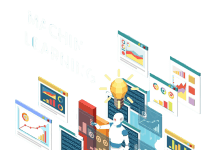We have always come across many different types of technology and we also use some of them regularly. Technologies like mobiles, TV, 4G networks, and whatnot. Many aren’t aware of what assistive technology is and why it is mentioned in the headline that this type of technology is a helping hand.
Assistive technology is used and implemented regularly too! Assistive technology is a technology which used by individuals with disabilities to perform activities and functions that might otherwise be difficult or impossible. Assistive technology includes mobility devices like walkers and wheelchairs, hardware and software, and other peripherals that assist people with disabilities in accessing the computer or other information technology. There are many examples of this technology like people with limited hand function may use a keyboard with large keys or a special mouse to operate a computer, people who have no eyesight may use software that reads the text on the screen in a computer-generated voice and many more.
This technology helps people with different disabilities to live healthy, productive, independent, and dignified lives and also allows them to participate in education, the labor market, and civic life. Without assistive technology people with different disabilities and diseases are often left alone, isolated, and excluded which promotes the increase of the impact of the disease. The saddest fact of the positive impact of the technology is that out of only 10 people only 1 person with disabilities has the access to use this technology and lead a better life. Assistive technology is costly and has a lack of awareness, availability, trained personnel, policy, and financing.
People who are in the utmost need of Assistive Technology are people with disabilities, older people, people with non-communicable diseases like diabetes and stroke, people with mental health conditions including dementia and autism, and people with gradual functional decline.
Though there are many benefits of the technology to the people who are in the need of this technology, there are many and severe challenges faced by the people who are suffering and people who are working for them. Challenges faced are:
- Policy: Very few countries have the National Assistive Technology policy or program. In many countries, there is access to assistive technology in the public sector but it is poor or non-existent.
- Products: The assistive products industry is currently limited and specialized, primarily serving high-income markets. There is a lack of state funding, nationwide service delivery systems, user-centered research and development, procurement systems, quality and safety standards, and context-appropriate product design.
- Provision: In high-income countries services are often stand-alone and not integrated. People are forced to attend multiple appointments at different locations, which are costly and add to the burden on users as well as caregivers, and on health and welfare budgets. In many low- and middle-income countries, national service delivery for assistive products does not exist. Those who can afford them buy assistive products direct from a pharmacy, private clinic, or workshop.
- Personnel: Trained health personnel are essential for the proper prescription, fitting, user training, and follow-up of assistive products. Without these key steps, assistive products are often of no benefit or abandoned, and they may even cause physical harm (as is the case of providing wheelchairs without pressure relief cushions for people with spinal injury).
There are certain challenges faced by the people because of the disabilities and somewhere because of lack of awareness of the technology. This technology can make this earth a better place to live for people with different disabilities and diseases if there will be an increase in the awareness and the availability of the resources related to the technology.










